Josh Kurtz: Can’t Tell the Players (or the Year) Without a Scorecard
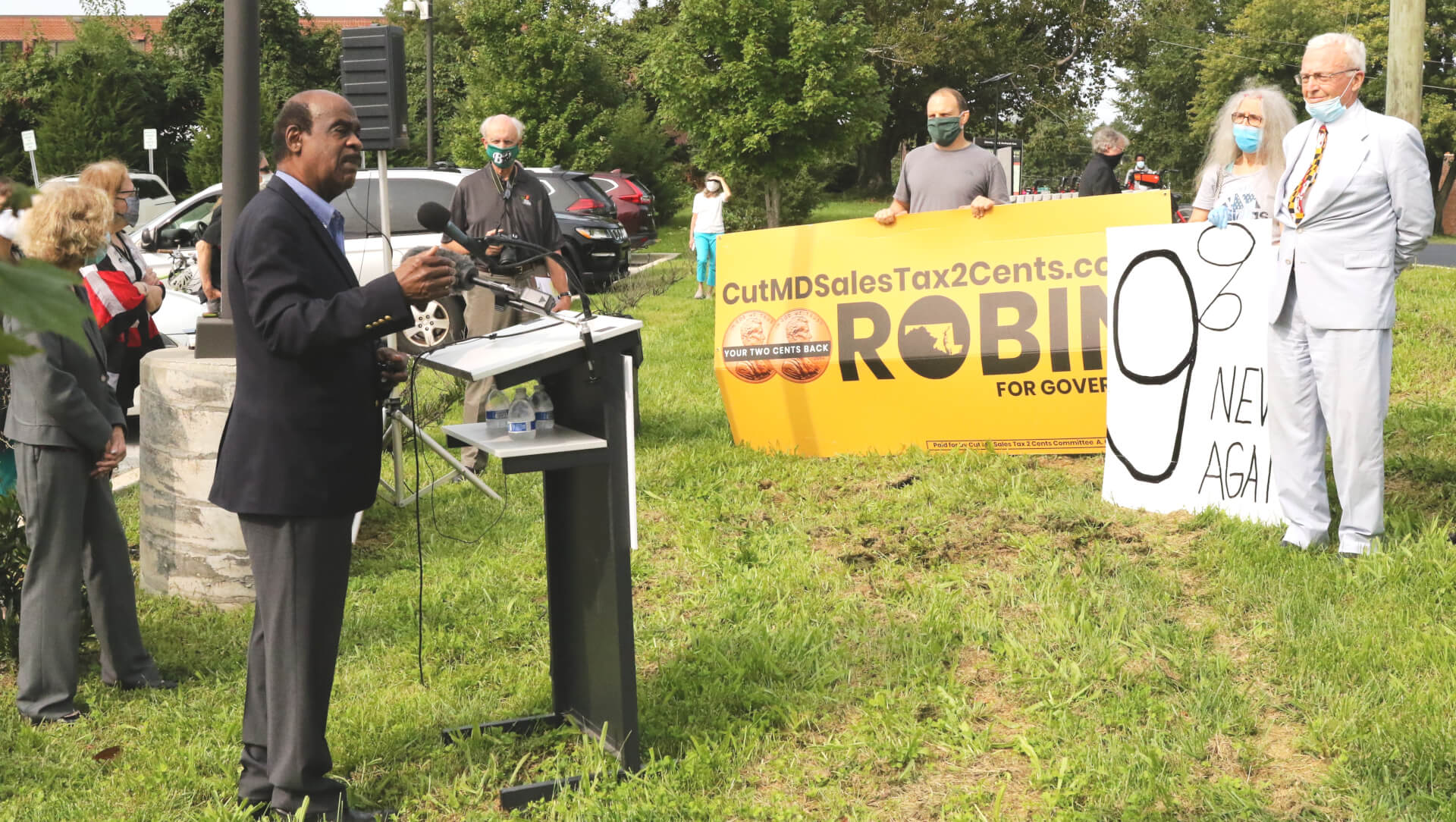
It took 38 minutes to ride my bicycle from home to a news conference in front of the Dennis Avenue Health Center in Silver Spring the other day.
Over those six miles, it seemed like I had traveled back approximately two decades.
Former county executive Ike Leggett (D) was there. So was former congresswoman Connie Morella (R). So, shouting his opposition and wearing a seersucker suit, was anti-tax gadfly Robin Ficker.
What a scene.
As if that wasn’t enough nostalgia, Patrick Lacefield, who spent 20 years as a public information officer with the county government before retiring at the end of Leggett’s tenure in December 2018, was on hand as the press Sherpa, jokingly quoting the only memorable line from “Godfather 3,” uttered by Al Pacino: “Just when I thought I was out, they pull me back in.”
Officially, we were there to witness a socially-distanced news conference by Leggett, Morella and two prominent business leaders, David Blair and Carmen Ortiz Larsen, to oppose two of four initiatives that will appear on the Montgomery County ballot this fall.
Every election cycle, for as long as I can remember, Ficker has sponsored a charter question for the Montgomery County ballot, and most years, a battalion of MoCo insiders assembles to oppose it — and him. Year after year, there’s a news conference in a parking lot somewhere, and Ficker pretends to seethe on the sidelines, when he’s secretly enjoying the attention. It’s almost like a reunion.
This year’s Question B, advanced by Ficker, who for all his obnoxious behavior has been as influential, with his ballot measures and public performances, as any Montgomery County elected official, would lock in the county government’s current property tax cap.
The second initiative Leggett & Co. were opposing, Question D, would change the County Council configuration from five members elected from geographic districts and four at-large members elected countywide, to nine members, each elected by district.
Leggett, Morella et al aren’t the only people mobilizing on the ballot initiatives this fall, and it’s becoming increasingly difficult to tell the players without a scorecard. Some groups are working more or less in concert and others are obviously at cross-purposes.
“The conversations are overlapping,” said one county insider who is tangentially involved in one of the efforts.
It’s a little reminiscent of the Monty Python movie “Life of Brian,” where the People’s Front of Judea is constantly at war with the Judean People’s Front. And let’s not forget about the Judean Freedom Front.
But enough about ancient fictional sectarianism, which seems to be replicated with some regularity in Montgomery County. We are talking about four ballot questions here, all of which The Washington Post editorial page, which still carries weight in the county, summarily dismissed over the weekend.
Two measures were placed on the ballot by citizen initiative, while the other two were voted onto the ballot by the County Council.
Question A, an initiative sponsored by Councilmember Andrew Friedson (D), also limits the county’s ability to raise property taxes by capping the weighted average tax rate on property and allowing collections to rise with assessments — but allows more flexibility.
Question B is the latest in a long series of so-called Ficker amendments, and is drawing predictable opposition from an array of Montgomery County powerbrokers.
Question C, generated by Councilmember Evan Glass (D), would add two district council seats to the current five district seats, bringing the total to seven, and keep the four at-large seats. And then there’s the “Nine for Nine” single-district proposal, Question D.
As of today, the Leggett and Morella group is the most visible, based on the players alone.
Leggett, age 76, said the Ficker amendment would impede the county’s ability to fund critical services, such as the health care available on Dennis Avenue, and he noted that Prince George’s County recently opted to establish at-large council seats because the all-district model was too parochial.
“Let’s not go through these radical changes at a time of great need,” Leggett said.
The involvement of Morella, age 89, gives the effort a bipartisan sheen.
But this wasn’t just a reunion of Montgomery County political alta cockers (that’s Yiddish, for those of you scratching your heads). Blair, the businessman and philanthropist who came within 77 votes of winning the Democratic primary for county executive in 2018, said he was inspired to get involved after hearing from Leggett.
“When you get a call from Ike Leggett on a Sunday afternoon, you sit up straight and you turn the TV off,” he said.
Blair is assumed to harbor further political ambitions — likely another run for county executive in 2022. How lining up as a proponent of the status quo jibes with the anticipated message that he’s a change agent remains to be seen.
On the other hand, fighting Ficker is a time-honored rite of passage for Montgomery County Democrats. Whether Blair helps bankroll the anti-B and anti-D effort — which Morella labeled “BAD” — is also an open question.
Larsen, who owns a Bethesda technology and engineering firm, appeared at the news conference as the voice of emerging minority businesses in a county whose demographics are changing rapidly. She spoke in both English and Spanish.
Ficker, now 77, was his usual disruptive presence, attempting to engineer his way into the photographs and initially trying to shout down the speakers before they began. He had to settle for getting his message across after the quartet spoke.
“We had three multimillionaires come out for another tax increase,” he said. “The elected officials have put some unelected millionaires out here today.”
If he had witnessed the spectacle, Charles Barkley (the hoopster, not the former Montgomery County legislator), would surely have flashbacks to Ficker’s courtside antics.
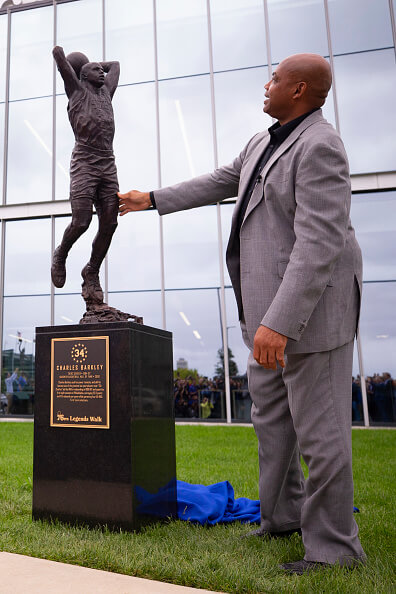
Charles Barkley unveils his sculpture at the Philadelphia 76ers training facility in Camden, N.J. Photo by Mitchell Leff/Getty Images
Beyond this effort are the other groups working for or against the ballot initiatives. Some haven’t been officially christened yet and some have just begun raising money.
Fairly or not, all have to be seen through the prism of future Montgomery County elections, beginning in 2022, when the usual round of ambitious politicians will emerge to run for various offices. At a minimum, three County Council seats will come open in 2022 due to term limits — the at-large seat held by Councilmember Hans Riemer (D), the District 2 Upcounty seat held by Councilmember Craig Rice (D), and the 4th District East County Seat held by Councilmember Nancy Navarro (D).
Unless, of course, the districts change wildly thanks to one of the initiatives on the ballot this fall. That could create a series of new opportunities for aspiring pols where they don’t exist now — or not.
The “Nine for Nine” group was spearheaded by community leaders frustrated by the County Council’s tilt toward down-county — and the Silver Spring/Takoma Park axis of activism specifically.
“The bottom line is, we’re not being represented fairly,” Kimblyn Persaud, chair of Nine Districts for MoCo, said on “A Miner Detail” podcast earlier this week.
It all sounds very grass-rootsy, and to an extent, it is. But in The Seventh State blog last month, Adam Pagnucco helpfully pointed out that the effort was funded initially by an interesting mix of real estate developers and unions. That’s a potentially potent combination of strange bedfellows.
But maybe we shouldn’t be so surprised. These groups have mobilized against Ficker amendments in the past. But when the Ficker term limit measure found its way to the 2016 ballot, some of these organizations quietly supported it — figuring that term limits were an easier way to remake the county government than doing actual electoral spadework. So the nine-districts movement may have the same appeal. The question is whether these groups will continue investing money.
Even though Persaud describes herself as “a hardcore Democrat,” her effort may suffer from the perception that it’s a Republican initiative. A nine-district scheme may be the best way to elect a Republican to the council (which last happened in 2002), so unsurprisingly the Montgomery County Republican Central Committee supports it. The Montgomery County Democratic Central Committee opposes it.
Meanwhile, Marilyn Balcombe, president of the Gaithersburg-Germantown Chamber of Commerce, is co-chair of a group tentatively called Residents for More Representation, to support Question C, the measure to add two district council seats. Michelle Graham, another county business leader, is the other co-chair.
Balcombe ran for County Council in 2018, finishing just out of the money in the Democratic at-large primary, when she preached the importance of more representation for the Upcounty. She says she’s sympathetic to the nine districts push, but thinks the proposal for seven district seats and four at-large seats is “a good compromise.”
“I think the primary reason for seven districts is constituent service,” she said. “We’re a county of 1.1 million people. We haven’t changed the size of government for a very long time.”
Next, there’s a group of about two dozen progressive organizations, under the umbrella of Jews United for Justice, called Montgomery Neighbors Against Question B (the Ficker amendment). The co-chairs of this effort are Jill Ortman-Fouse, the former Board of Education member who ran unsuccessfully for council in 2018, and William Roberts, a former top aide to U.S. Rep. Jamie B. Raskin (D-Md.) who is now the the managing director for Democracy and Government Reform at the Center for American Progress.
There was a significant development in the ballot initiative battle Wednesday night when the Montgomery County Democratic Central Committee weighed in on all questions — in favor of A and C and against B and D. So when the county party sends its sample ballot out to Montgomery’s 403,000 registered Democrats, those recommendations surely will help guide voters’ preferences.
The county party’s position aligns with County Executive Marc B. Elrich’s views — though earlier this year, Elrich embraced a proposal to have seven district council seats and just two at-large seats. That is not appearing on the ballot this year.
Soon, it will be up to the voters — and complicating matters, there are consequential statewide initiatives on the ballot as well.
If all county measures fail, they fail. But what if, say, both initiatives on the council makeup pass? If that happens, they cancel each other out and the status quo prevails. Same for the two ballot questions on taxation.
Confused yet? You ought to be — though maybe not as confused as I was when I biked over to the health center and thought I had time-traveled to the 1990s.

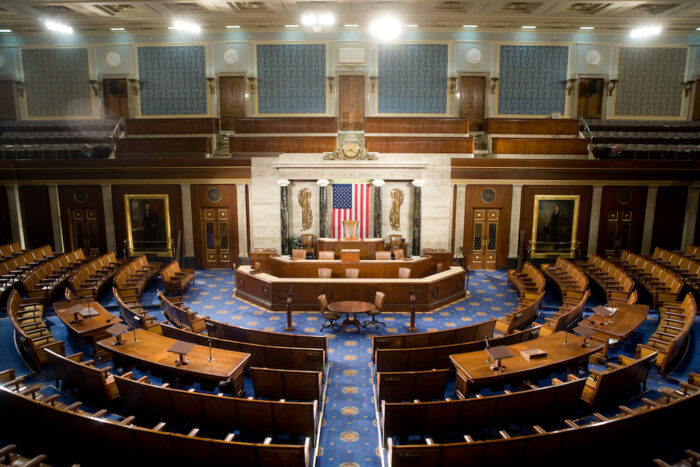
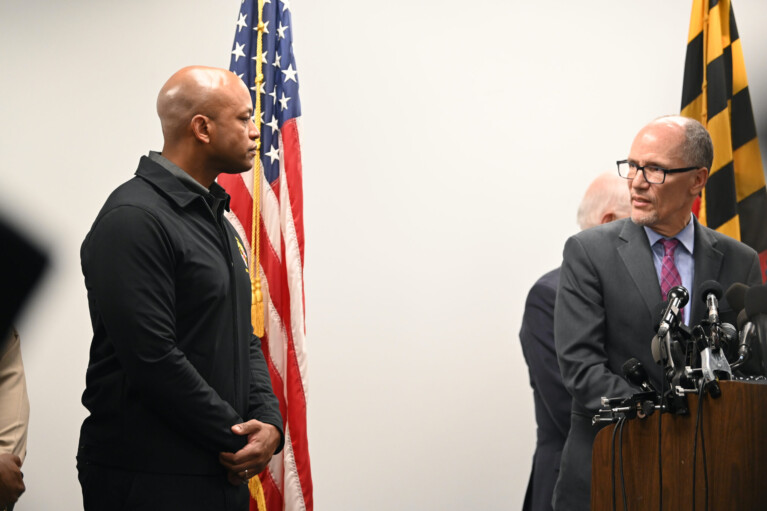
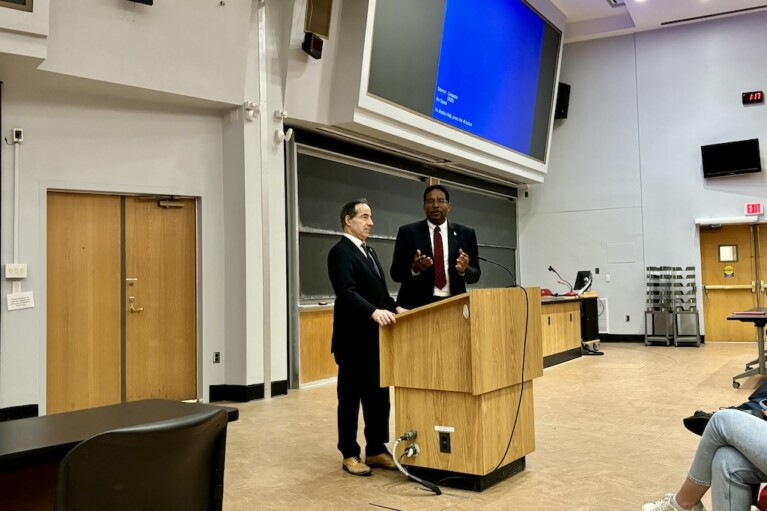
 Creative Commons Attribution
Creative Commons Attribution